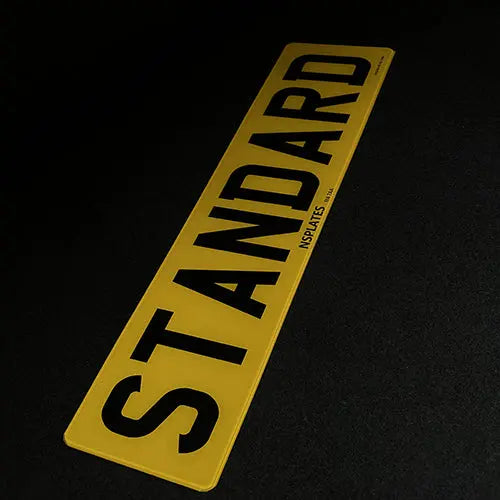When it comes to hitting the road in the United Kingdom, one thing stands as a common thread among all vehicles – the standard number plate. More than just a legal requirement, these plates play a pivotal role in vehicle identification, law enforcement, and ensuring order on the bustling streets. Let's go deep down into the intricate details of standard number plates, exploring their significance, regulations, and the story they tell about each vehicle.
Understanding the Basics
The Numbers and Letters Game
At the heart of every standard number plate is a unique alphanumeric combination. This series of numbers and letters serves as the vehicle's distinct identifier, a code that links it to its registered owner. This system facilitates smooth traffic management, aids law enforcement, and assists in identifying vehicles involved in incidents or violations.
Regulations Governing Design
While the combination of numbers and letters might seem straightforward, the design of standard number plates is meticulously regulated. The UK government has outlined specific requirements regarding font, size, spacing, and color to ensure uniformity and readability. These regulations contribute to the cohesive and organized appearance of vehicles on the road.
The Role of Standard Number Plates
Vehicle Identification
The primary function of a standard number plate is to uniquely identify each vehicle. This is crucial for various aspects of law enforcement, from monitoring traffic violations to investigating accidents and addressing criminal activities involving vehicles.
Legal Compliance
Standard number plates serve as proof that a vehicle is legally registered. They indicate that the necessary taxes and fees have been paid, and the vehicle adheres to the country's transportation regulations.
Safety Measures
The reflective properties of standard number plates are designed to enhance visibility, especially in low-light conditions. This contributes to road safety, ensuring that vehicles remain identifiable to other road users and authorities.
Cracking the Code: Understanding the Composition
Breaking down the alphanumeric code on a standard number plate reveals more than just a random assortment of characters. The first part typically indicates the region or area of registration, while subsequent characters provide a unique identifier for the vehicle. Deciphering this code allows for quick identification of where a vehicle is registered.
Evolution of Standard Number Plates
Standard number plates have come a long way in terms of design and materials. The traditional metal plates have seen innovations, with the introduction of materials that enhance durability and reflective properties. Additionally, advancements in manufacturing techniques have allowed for more intricate and customisable designs while still adhering to regulatory standards.
Personalisation Options and Legal Boundaries
While standard number plates follow strict regulations, there is room for personalisation within legal boundaries. Vehicle owners can choose from a range of styles and formats for their standard plates, as long as they comply with the specified regulations. This allows for a touch of individuality without compromising the standardized system.
Conclusion
In conclusion, standard number plates in the UK transcend being mere identifiers on vehicles. They represent a sophisticated system that enables smooth traffic flow, aids law enforcement, and ensures the safety of road users. As we navigate the streets, these plates silently tell the story of each vehicle's registration, compliance with regulations, and a touch of personalisation within legal limits. So, the next time you spot a standard number plate, remember, it's more than just digits on metal – it's a vital element contributing to the order and safety of our roads. Order Now!



Leave a comment
This site is protected by hCaptcha and the hCaptcha Privacy Policy and Terms of Service apply.